Future is Female: Never Has the Planet Needed Us More
Female leaders and environmental champions discuss ways we can build a better future and make informed investments when buying jewelry.
This World Environment Day, the theme is Eco-System Restoration; a topic close to the heart of everyone living and working in the world of natural diamonds. As ethical mining continues to support communities, fund conservation and benefit wider society, whilst minimizing its environmental impact, who better to discuss this theme than some of the environmental leaders and changemakers shaping the future of diamond production today.
We brought together a group of trailblazing women, each with their own fascinating backgrounds in political science, environmental sustainability, jewelry design and climate justice to discuss how diamonds can truly help to do good by our planet and how to be a better, conscious consumer.
“These women have made a mark for themselves in their respective fields, a feat in itself considering the sheer lack of female representation in leadership roles around the world,” says our panel host, the climate justice organizer, Teen Vogue writer and filmmaker Maia Wikler. “Some of the greatest successes and impacts begin with a simple story; a catalyst moment of reflection, or the tenacity and perseverance of a change maker with a vision.”
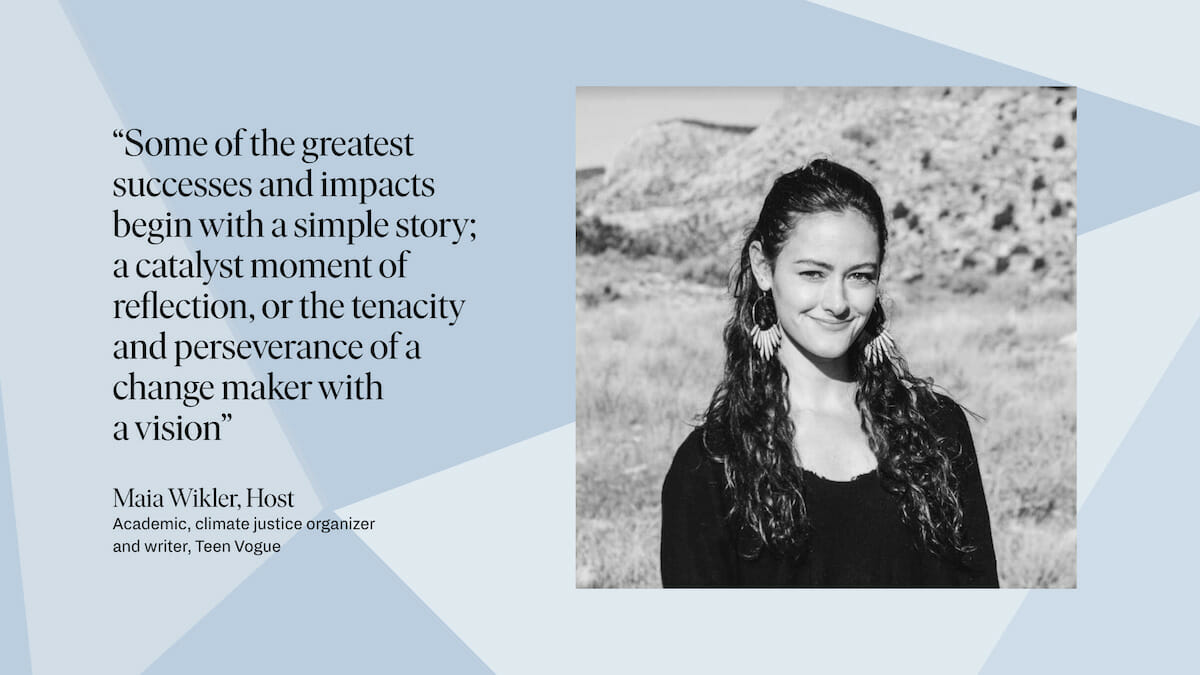
So, where do these stories begin?
Grace Zvinowanda is Senior Health, Safety and Environment Advisor at one of the world’s largest open-pit diamond mines, Zimbabwe’s RZM Murowa. After her degree in environmental pollution science, she started work overseeing environmental monitoring of air, water, biodiversity and Greenhouse Gas Emissions. “I was promoted to be the senior health, safety and environmental advisor. I know many women in the environmental field but not in the diamond production industry.” The fact there are relatively only a few diamond mines and all are located in remote areas could be a reason for this lack of representation, Grace suggests. “This can often mean staying away from their families, in addition the industry is perceived as being male dominated with fewer women wanting to take up these roles, like the one I hold.”
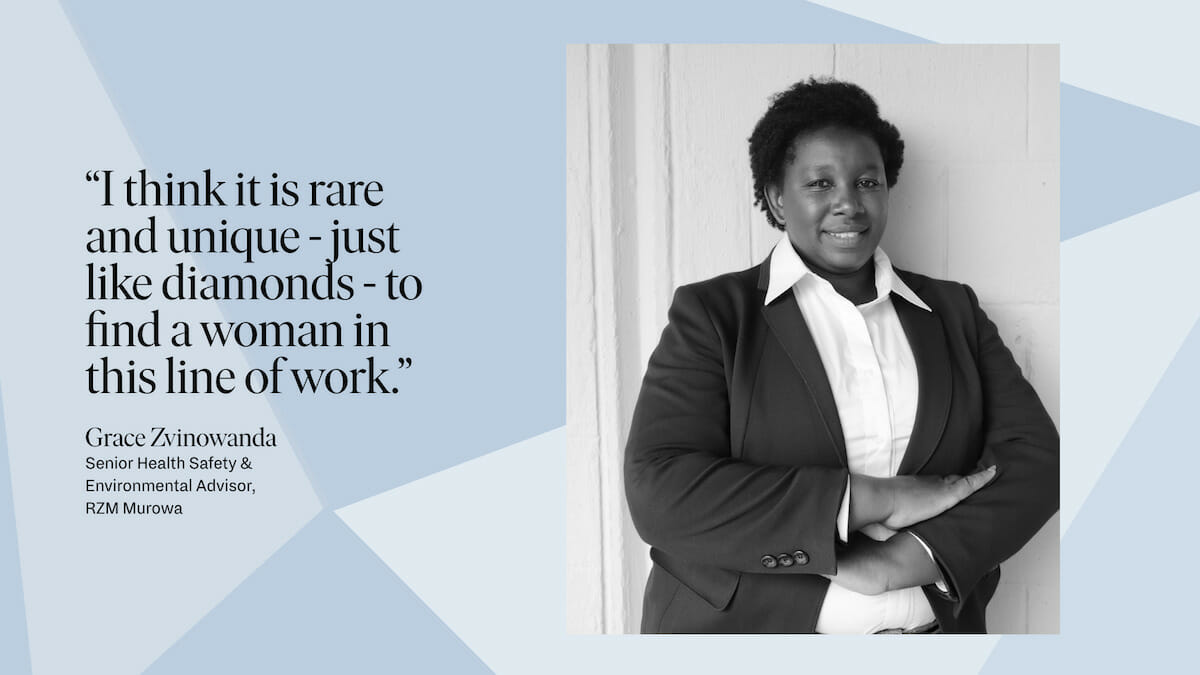
Today, Grace is responsible for land rehabilitation, environmental monitoring, research, evaluation, and compliance to environmental law at RZM Murowa. Her team reduces the mine’s environmental impact, while building a sustainable legacy that will improve Zimbabwe’s economy and lives of its communities for generations. Grace is also a member of the Organisation for Women in Science Development and Society of Women in Safety, Health and Environment, Africa, inspiring other women to get into this field.
Kirsten Hund, Head of Carbon Neutrality at De Beers Group, agrees that when it comes to technical and engineering matters, she is often the only female in a room full of men. “There are amazing female climate scientists out there already, but I think in the technical engineering field, that’s where we need more women. It’s about getting more women involved, not necessarily about women needing to replace men because they would be better at it. We need equal opportunities. The fact that half of humanity was excluded from these kinds of positions before is bizarre.”
Jewelry and slow fashion designer Ferelith Moltke is the founder of Beabond, a climate-positive lifestyle brand based in Botswana, which she named after her grandmother. Ferelith says it was moving to Botswana and becoming a mother that transformed her outlook both as a creator and as a consumer, because over five years she slowed her life down to raise her family, during which time she was inspired to make a difference, starting with challenging consumer behavior and habits.
“Every artisan and craftsperson we’ve co-created with are people I have met in person and all the women we work with are breadwinners – in fact, one group of female weavers are mothers and grandmothers with day jobs as agriculturalists – so supporting one artisan has a much bigger impact.
“We are very much working in the slow fashion movement with small batch production and seasonless, timeless styles – very simple shapes inspired by nature and colors of Botswana that don’t go out of fashion, that you want to save and keep for the next generation.”
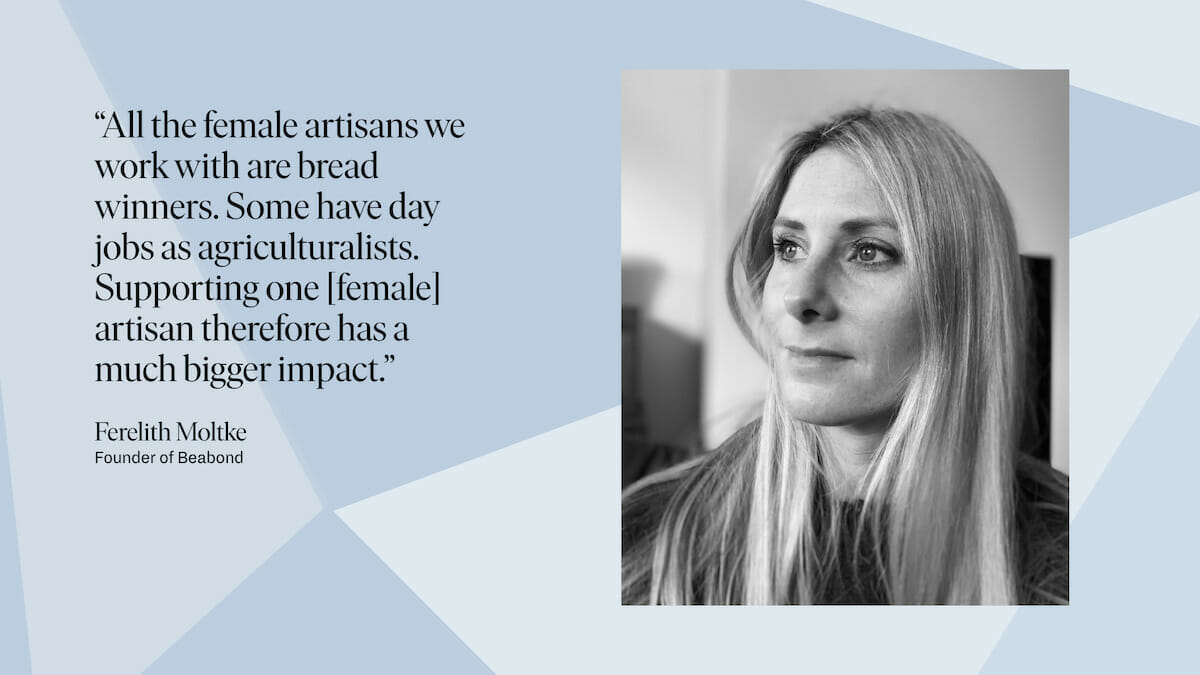
Ethical jewelry designer Melissa Joy Manning has been putting sustainability first in her collections for 25 years and is dedicated to the artisans and communities behind her craft. “As early as 1997, when I started out on my journey learning about the impacts of mining gold and stones, I felt really compelled to make better choices. Climate change is such an issue of our time, but the people piece was really getting lost and if we are really talking about where our jewelry is sourced, what about who makes it and how much they’re getting paid? And what about where it’s made?
“As consumers, we can use our purchase power to pull communities out of survival mode. The whole issue is intrinsically linked to providing the living working wage, understanding that the people piece is as important as the environmental piece. Do I think it’s a feminist issue? I do, but I also think it’s a humanitarian issue. Like men, women procreate, [but] I think women inherently want to secure a better future for their children. And you can talk to women as they become mothers, all of a sudden these issues that were conceptual before now become concrete. We ask ourselves ‘what’s the future going to hold for my children’ and I think in that respect, yes, I totally agree we need more women in every field. But I think we also need more women as leaders, because we want to see a future for everyone.”
“If you’re going to buy a diamond which is a beautiful symbol of love, you want to know it has been produced sustainably and its carbon footprint is a crucial component,” agrees Kirsten. “De Beers Group’s Building Forever strategy takes an integrated approach, it’s all about leaving a lasting legacy even after the last diamond hascome out of the ground. It looks at all different aspects, linked to health, biodiversity, new skills, new industries and economic development.”
One of the pioneering ways De Beers Group is exploring to help restore our planet is Project CarbonVault, Kirsten tells us. Through the diamond mining process, a rock called kimberlite is unearthed, instantly absorbing carbon as it reaches the earth’s surface. If De Beers and its academic research partners can accelerate this process, the project has the potential to lock carbon from the earth’s atmosphere for millions of years. The time and investment in this type of research is part of every ethical diamond mine’s ongoing commitment to the planet and sustainability.
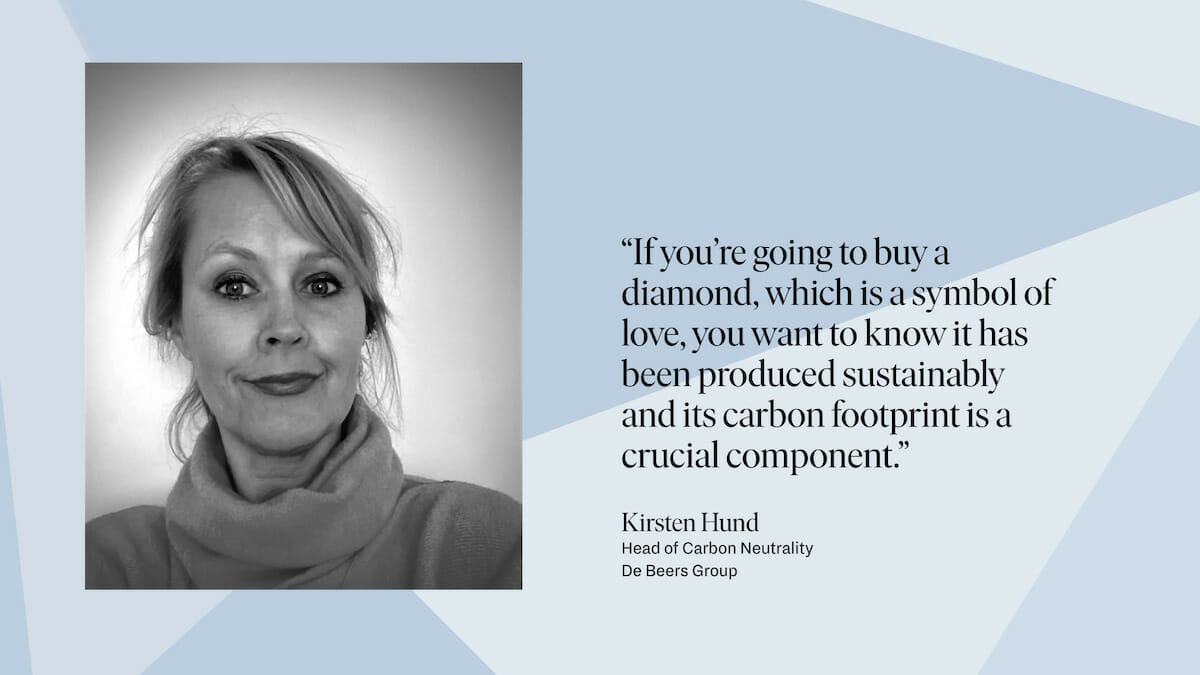
Beabond’s philosophy of ‘better, fewer things’ seems to be one which particularly resonates among the group. “For jewelry, this means designing things that are intended to be modern heirlooms so in fifty years, maybe you will hand it down,” explains Ferelith. “We don’t make a lot, if they are popular we will develop them further. That’s also about limiting our impact, our footprint. A lot of the things we make we make to order. And we source diamonds direct from Botswana Diamonds, because Botswana is the largest producer of ethically mined diamonds in the world and a lot of the funds raised from diamonds goes into the infrastructure of the country, like roads, hospitals, schools and education. You know, when I was living there, they were upgrading the airport and they had just completed this mammoth bridge which connects Zimbabwe to Botswana.”
“I buy my diamonds from one person,” says Melissa, “a third, fourth generation diamond dealer who can certify their provenance; not only where they came out of the ground, but how many children that cutter has and what goes back to the community when we support that diamond. We ask a lot of questions, we ask for certifications. Luckily, there’s more options than there used to be. I now make a lot less things, but a lot better things that have clean sources, and I can feel really confident about what I’m putting out in the world.”
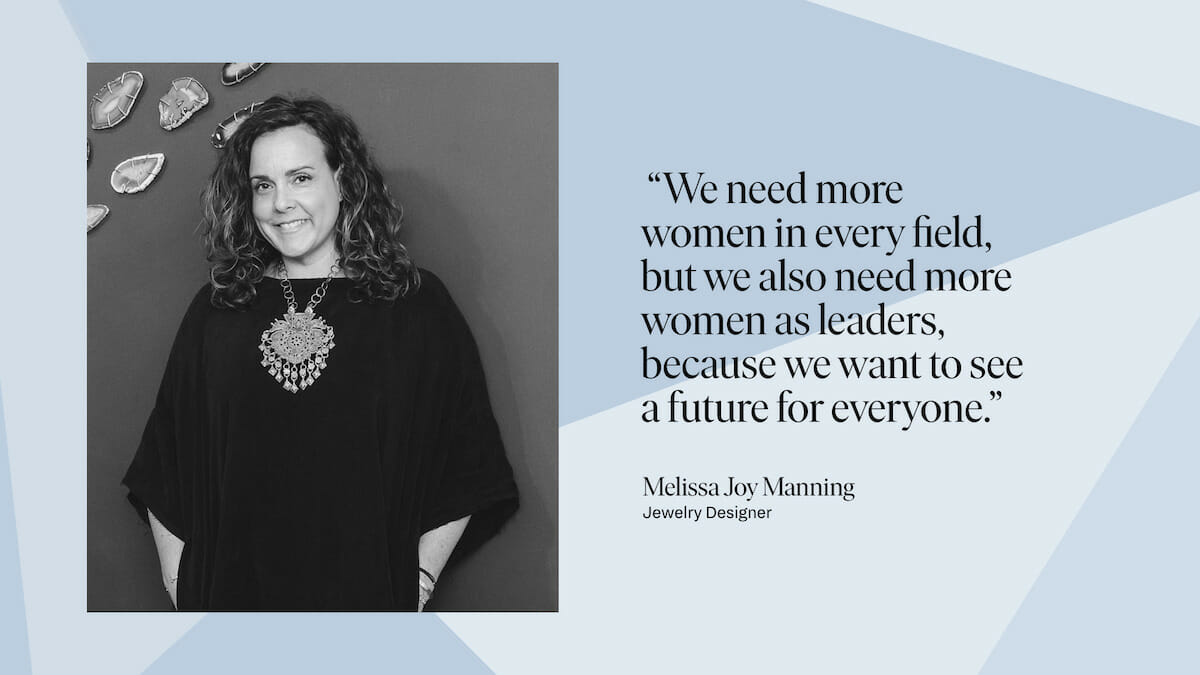
Have buying habits evolved as a consequence?
“I used to scare people away at trunk shows when I would talk about how we made things because the discussion was new, people were shell shocked and they would walk away,” says Melissa. “Now, people come into my store with their own stories, they have done a lot of research, they know exactly what they want, they’re able to kind of read through all of the greenwashing that exists in the industry. And I think that’s remarkable and super exciting to see, because it’s the only way we’re going to be able to make changes – to get consumers on board, asking really great questions that we can solve – because great design solves problems.”
With the advent of supply chain transparency, exemplified in the jewelry world by Melissa Joy Manning, Beabond and by members of the Natural Diamond Council, it is possible to invest in diamond pieces that help communities and empower women where they need this the most. “If we can buy something that is doing good, that is having more of a positive impact, I think that’s always a great benefit,” says Ferelith. “Be curious, always ask who made your product, where it was made and what the impact on the environment is.”
One piece of advice we can take away from this discussion is brilliantly made by Melissa. “We can’t blindly consume any more. When you buy something, you are supporting something. Buy something that synchs with your values and helps to make positive change.”
